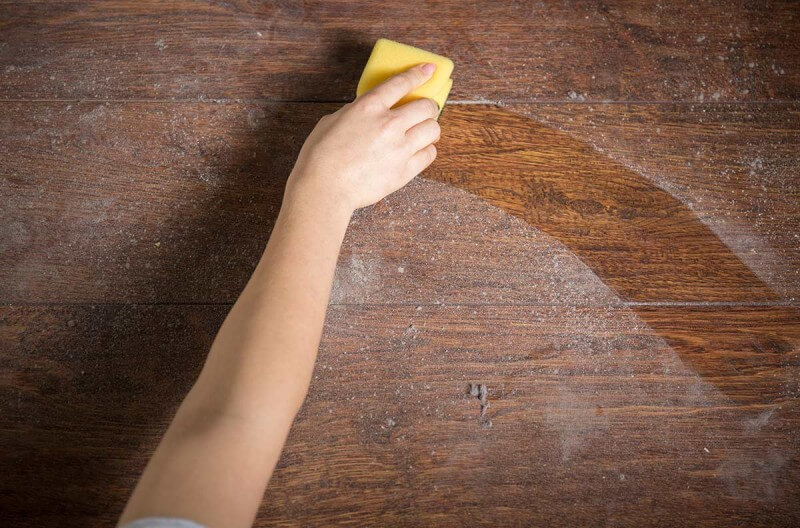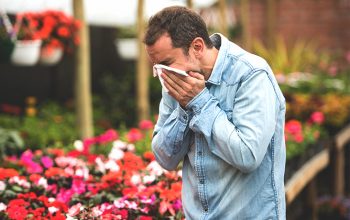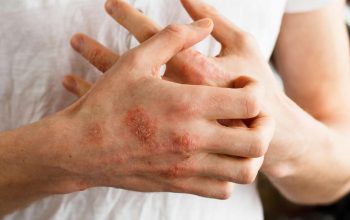Mites live in bedding, cause allergies through house dust and can cause asthma. Allergy sufferers can often help themselves with a few simple daily measures.
You are never alone in your bed – because there are always microscopic arachnids, house dust mites. Dust mites are allergic to many people and are found in every home and every bed, without exception.
But there is no reason to despair: the right measures in everyday life can significantly reduce the workload.
Profile: house dust mite
13 different types of mites live in the dust of our houses and apartments and are therefore called dust mites. These are eight-legged arachnids up to 0.5 mm in size, which we cannot see with the naked eye. They primarily feed on dandruff and mold and prefer to stay in pillows, blankets, mattresses, and upholstery. Up to ten million dust mites can roam in bed.
Good to know: House dust mites have nothing to do with a dirty or unsanitary apartment. Animals are found in every home. If you ventilate a lot and wash your bedding a lot, you can significantly reduce the amount.
Where do house dust mites live?
Favorite climate of house dust mites: 25 to 30 degrees Celsius and relative humidity over 70 degrees. When warm and humid, mites are active and multiply rapidly. Because we give people warmth and moisture while they sleep, we create the ideal habitat for mites between the duvet and mattress.
On the other hand, arachnids hate cold, dry climates. The colder it gets, the slower they multiply. If the relative humidity is below 50 percent, the mites lose too much fluid and die. However, allergies are often especially severe when we start to get warmer in the fall and the air gets drier – because dead mites disintegrate and mix with their allergens in the dust. And even if the outside temperatures in winter are too low for mites, they can spend the winter on our mattresses.
Are there no dust mites in the mountains?
For a long time it was said that house dust mites are rarely found at an altitude of 1200 to 1800 meters. However, a 2016 study found that dust mites can thrive at high altitudes – the deciding factor is not altitude, but the temperature and humidity on the mattress. According to the researchers, climate change and improved insulation and thermal insulation of buildings have improved conditions for ticks even at high altitudes in the Alps.
However, research shows that mountain air is beneficial for allergy sufferers and asthma sufferers, including because the mountains have fewer pollen and fungal spores and less fine dust. In addition, UV radiation is more intense, which strengthens the immune system and stimulates the production of vitamin D.
Development of house dust allergy
House dust allergy is a Type I allergy. With this immediate type of allergy, our body classifies dangerous proteins called allergens as dangerous. These allergens are found in the droppings of house dust mites. One gram of dust can contain up to 250,000 droppings. Unsurprisingly, mite allergies are also common: in a representative survey, 23 percent of German allergy sufferers said they reacted to house dust. Pollen alone was mentioned more often as the cause of allergies, 43 percent.
How does house dust allergy develop?
In the case of allergies, our body produces specific IgE antibodies, which are designed to prevent allergens in the feces of house dust mites. As a result, body cells release messenger substances, especially histamine, when we encounter tick droppings. These intermediates trigger inflammatory reactions that are associated with typical symptoms such as sneezing and itchy eyes.
Who develops house dust allergies?
The researchers acknowledged that parents of household dust allergy sufferers also often suffer from allergies such as hay fever. allergy tendencies seem to be inherited. If you are an allergic person yourself, pay more attention to your children’s house dust allergy symptoms.
Did you know? Back in the 17th century, people knew that house dust can cause allergic rhinitis. But it wasn’t until 1964 that researchers found mites in house dust and suspected they were the culprit.
Household dust allergy and allergic asthma
If, as an allergy sufferer, you encounter a lot of dust mites over and over again, your complaints may get worse over time. The mucous membrane of the nose can become permanently inflamed, which is associated with itching and a permanently blocked nose. Symptoms can also extend to the lower respiratory tract.
In this case, allergic asthma may develop. House dust mites are one of the most common triggers of this type of asthma, in addition to allergies to pollen and animal hair.
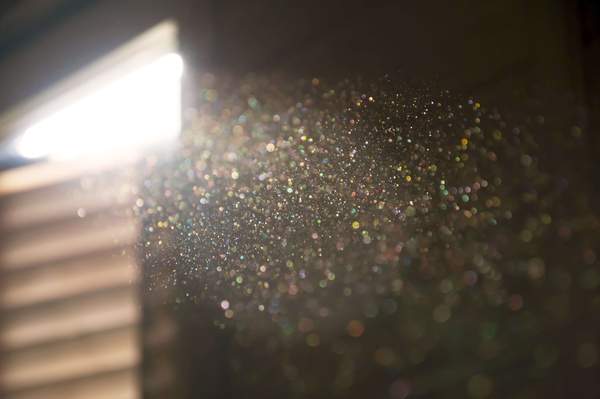
House dust allergy: symptoms and test
Allergy sufferers react to house dust, especially at night and in the morning if they are in bed between allergens. Even if you pick up dust while vacuuming or wiping, complaints may occur.
What are the symptoms of a house dust allergy?
If you are allergic to dust mites, it usually presents with the following typical symptoms:
- Nasal congestion, watery runny nose and sneezing
- Watery and itchy eyes
- Rare: itching and redness of the skin causing a flare-up of neurodermatitis
How to check for house dust allergies?
If you suspect that you or your child is allergic to house dust, you can do various allergy tests. Allergists, often also pediatricians, complete the injection test. The doctor will scratch the allergen solution into the skin, usually on the arm or back, and check to see if redness and swelling develop as a result.
Blood tests are also possible. You can ask your doctor for a blood test or self-test at home, such as the cerascreen® Home Dust Allergy Test.
Both. A prick test and blood test show if your body produces IgE antibodies when it comes in contact with dust mite allergens. In this case, doctors talk about sensitization to the allergen. Studies show that 16 percent of adults and 22 percent of children in Germany demonstrate this awareness of house dust. Adults are only more sensitive to grass and tree pollen, insecticides and food.
Sensitization does not mean that you really have an allergic disease with corresponding complaints. You can rest assured in a provocative test, in which the allergen is injected into the nose or lungs under the supervision of a doctor. Doctors then measure, among other things, how swollen the nasal mucosa and whether the volume of air inhaled and exhaled changes.
Cross allergy with house dust allergy: If you are allergic to house dust mites, chances are that you will also react to soft and crustaceans – for example, if they eat shrimp, crabs, lobster or mussels. This is due to proteins in animals that resemble tick allergens. In this case, doctors talk about cross-allergy.
House dust allergy treatment
By far the most effective therapy for house dust allergy complaints is to reduce the number of house dust mites. You can find out more in our 12 tips below.
What medications help with house dust allergies?
You can also use nasal irrigation and medications to relieve symptoms. Antihistamine tablets and glucocorticoid sprays are common choices. You can get some of these allergies without a prescription at the pharmacy. However, the drug is not suitable for continuous use.
House dust allergy immunotherapy
Since house dust allergies occur all year round, people with severe allergies need to find a permanent solution. If this is not enough to reduce the number of ticks by ventilation and bedding, immunotherapy may help.
With therapy, also called hyposensitization, doctors give you the allergen over and over again for a period of at least two years in increasing doses. This is done either by injection into the skin or with pills or drops that are placed under the tongue.
In many cases, the immune system is grafted onto the allergen through immunotherapy, and symptoms return or even disappear. Medical research in recent years has shown that dust allergy immunotherapy can also help against allergic asthma.
Tips for people with house dust allergies
Anyone who is allergic to dust mites should first try to make life difficult for small animals, especially in the bedroom. The following tips can help you reduce the burden of allergens on yourself or your children.
12 Tips to Reduce Dust Mites
- Well ventilate! Impact ventilation several times a day provides fresh air to absorb moisture from the bed.
- Place the mattress on the special cover in the body. This anti-allergy bedding prevents house dust mite allergens from building up on the mattress. When replacing sheets, you can wash the casings with a damp cloth and wash them every few months.
- A water bed is a good alternative for allergy sufferers – skin flakes cannot accumulate on the mattress, and water beds can also be well cleaned.
- Take cotton sheets and air them daily.
- Wash bedding every 60 minutes at 60 degrees.
- Don’t make your bed. Heard correctly: in the manufactured covered bed, heat and liquid may flow out of the mattress worse.
- Other textiles in the room, such as pillows, blankets and curtains, should be machine washed at least once every three months at 60 degrees.
- Remove unnecessary items from the bedroom that may be invaded by ticks, such as upholstered furniture, decorative pillows, and stuffed animals.
- If your favorite stuffed toy needs to go to bed, it should be washed regularly at 60 degrees. If this is not possible, place it in the freezer for 24 hours – this will also kill the ticks.
- Avoid bedroom plants – they increase moisture.
- Pets, like humans, lose dandruff, which feeds ticks. If possible, keep them away from the bedroom.
- It is better to leave vacuuming to those who are not allergic to house dust mites and create a vacuum cleaner with a fine filter.
Caution: Some vendors also sell mite sprays that can be sprayed on mattresses, bedding, and upholstery and that must target mites and their allergens. In the Öko-Test, all 13 sprays tested were rated “poor” or “insufficient”. According to testers, there is evidence that the sprays only work for laboratory conditions and not for practice.
These tips are only useful for people who are already allergic to house dust. If you do not have allergies, the measures may not likely prevent future allergies from developing.
Household Dust Allergy: An Overview
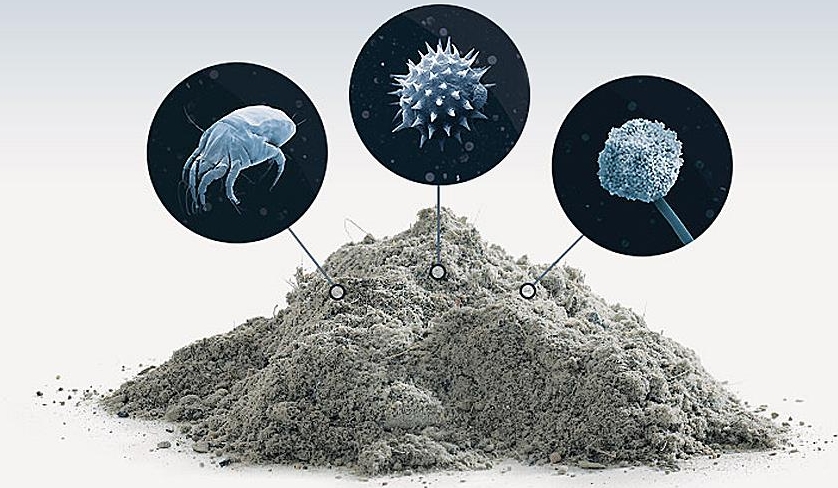
How does house dust allergy occur?
House dust allergy sufferers react to house dust mite droppings, which mix and curl with dust. Dust mites prefer to live in our beds, where they feed on dandruff and feel comfortable in humid and warm climates. Drought and cold damage to ticks.
What are the symptoms of a house dust allergy?
House dust allergy manifests itself especially in the morning, sniffing the nose, sneezing and itchy eyes. Redness and itching of the skin are less common. House dust allergy can cause illness in people with neurodermatitis.
What can I do about a house dust allergy?
The most effective measure is to reduce the number of mites in the bedroom. This is achieved primarily through intensive ventilation and at least two weeks of washing bed linen at a temperature of 60 degrees. If it is not enough to take home action against ticks, immunotherapy can relieve symptoms.

